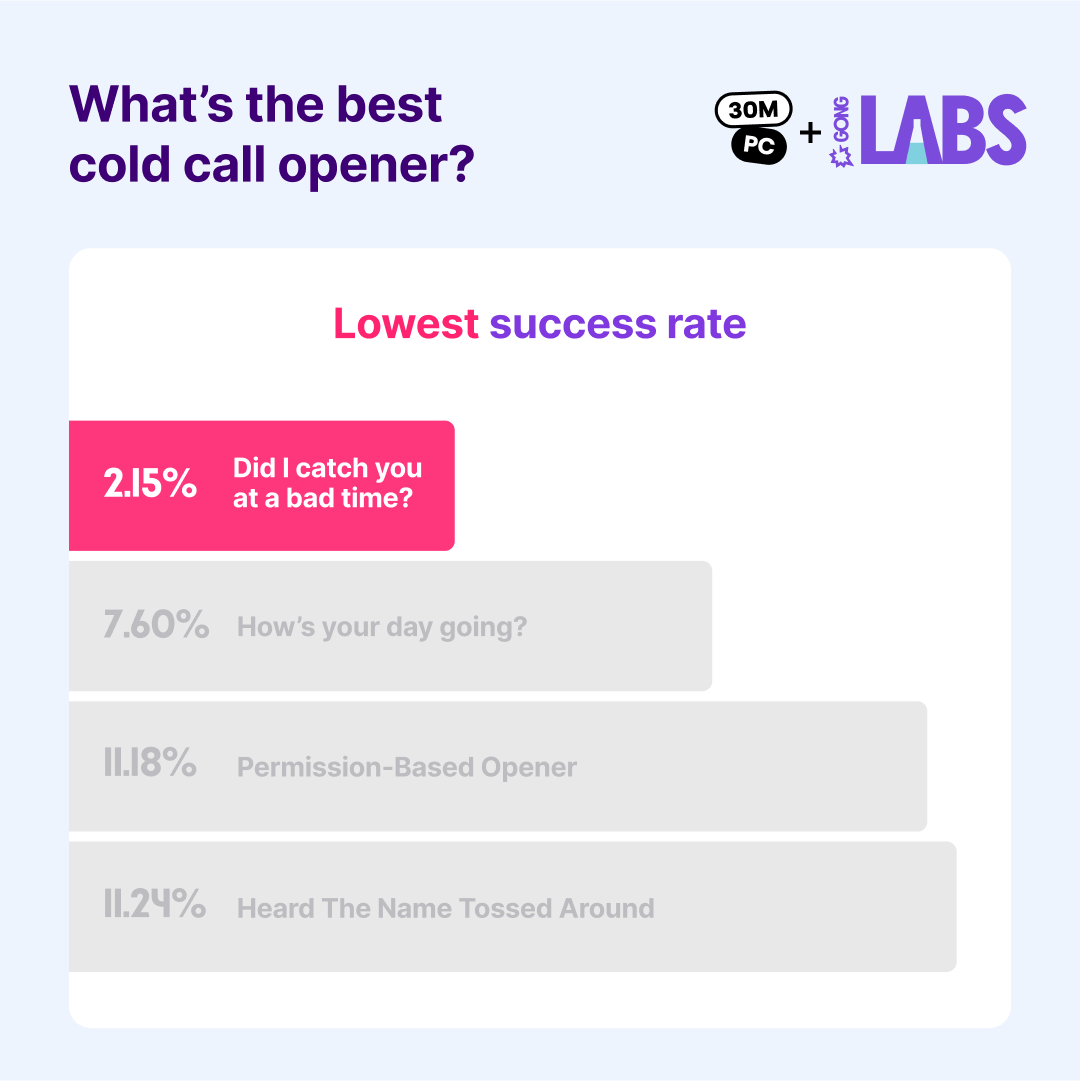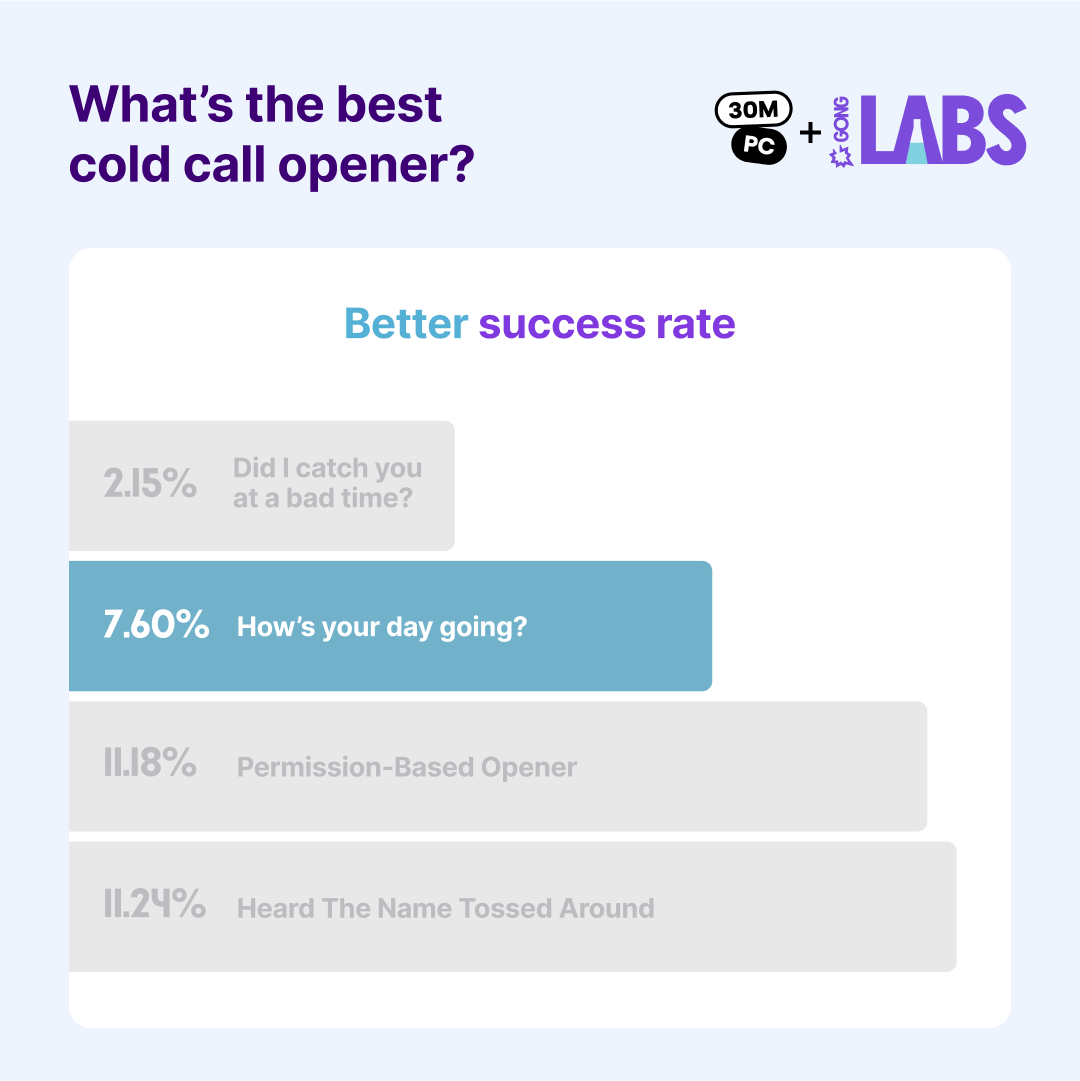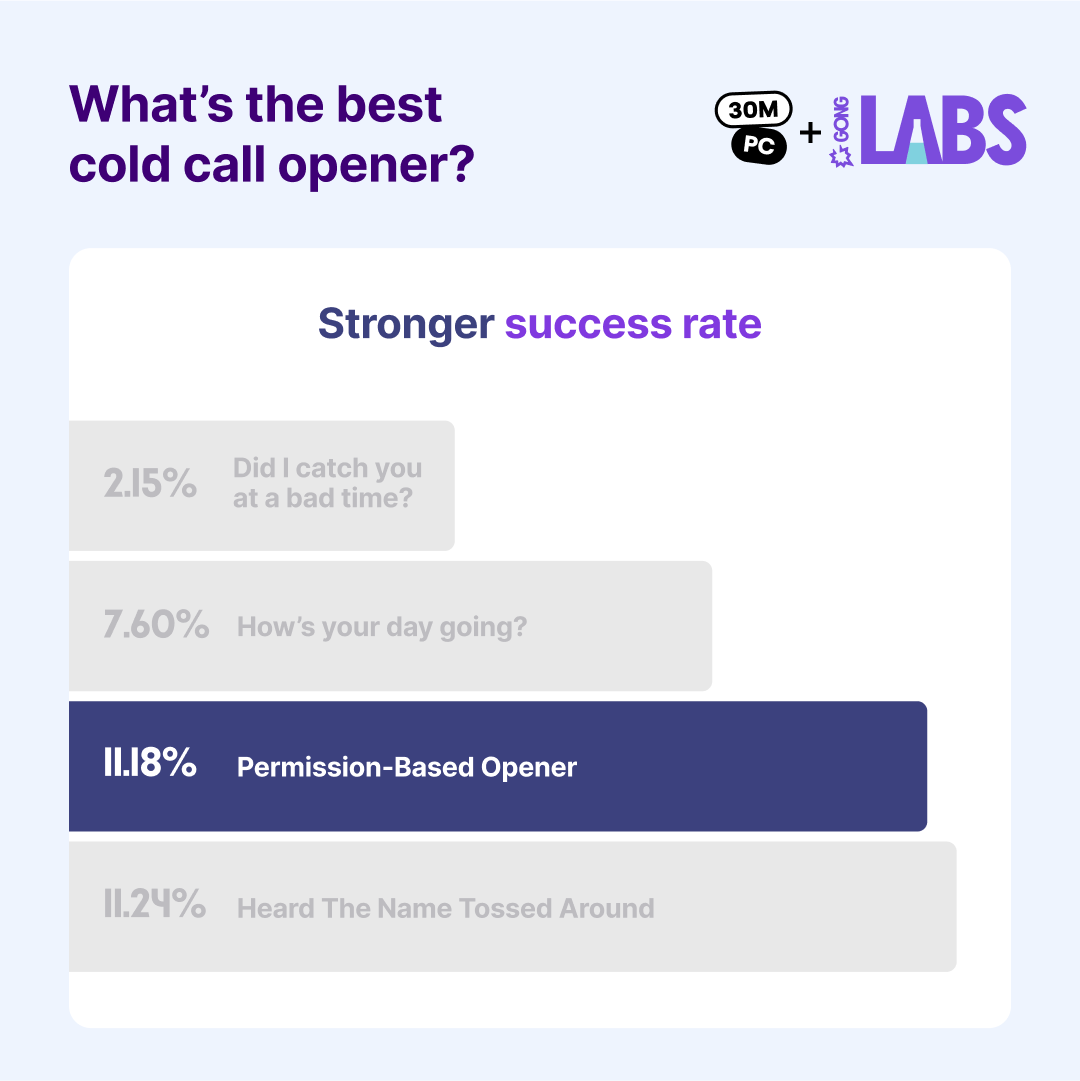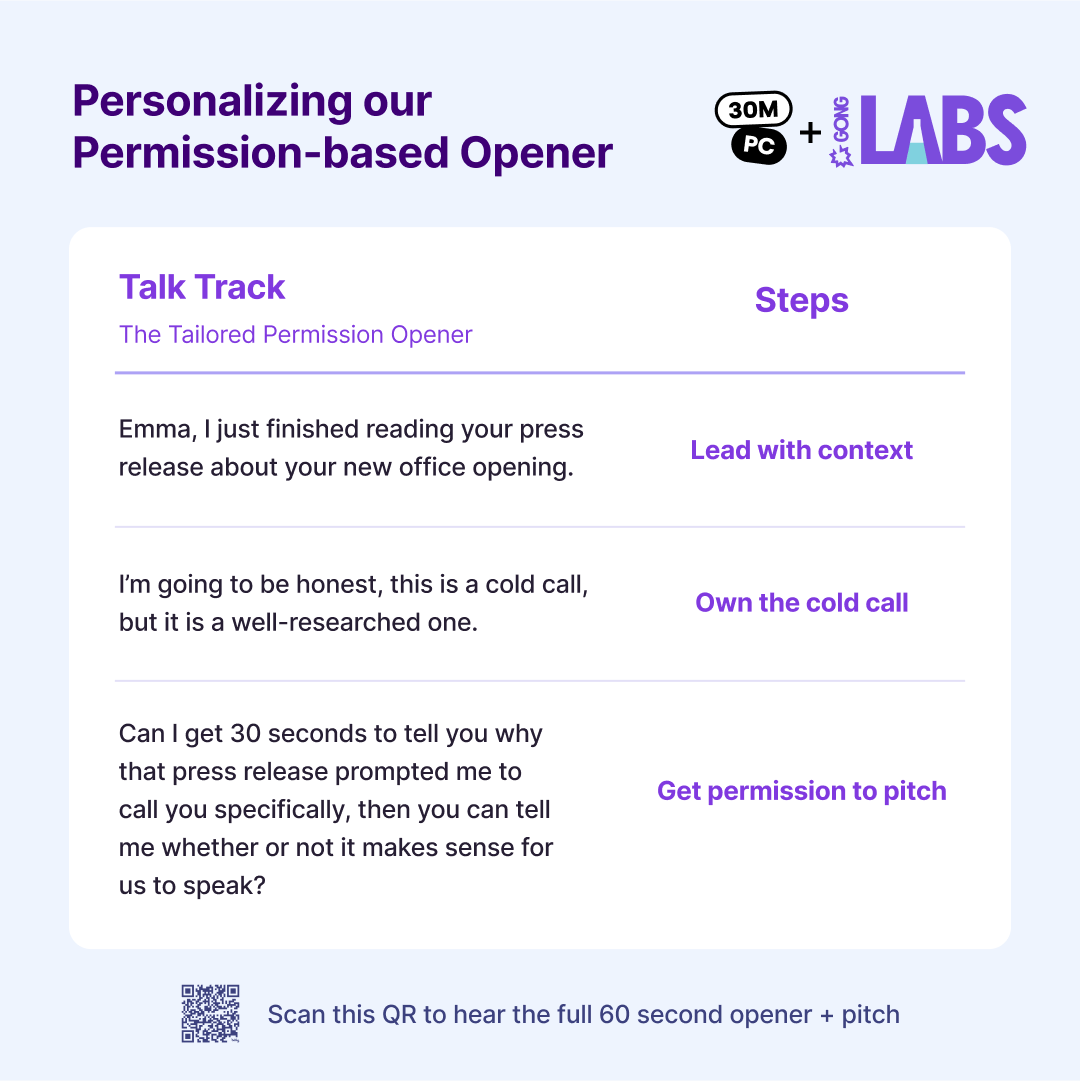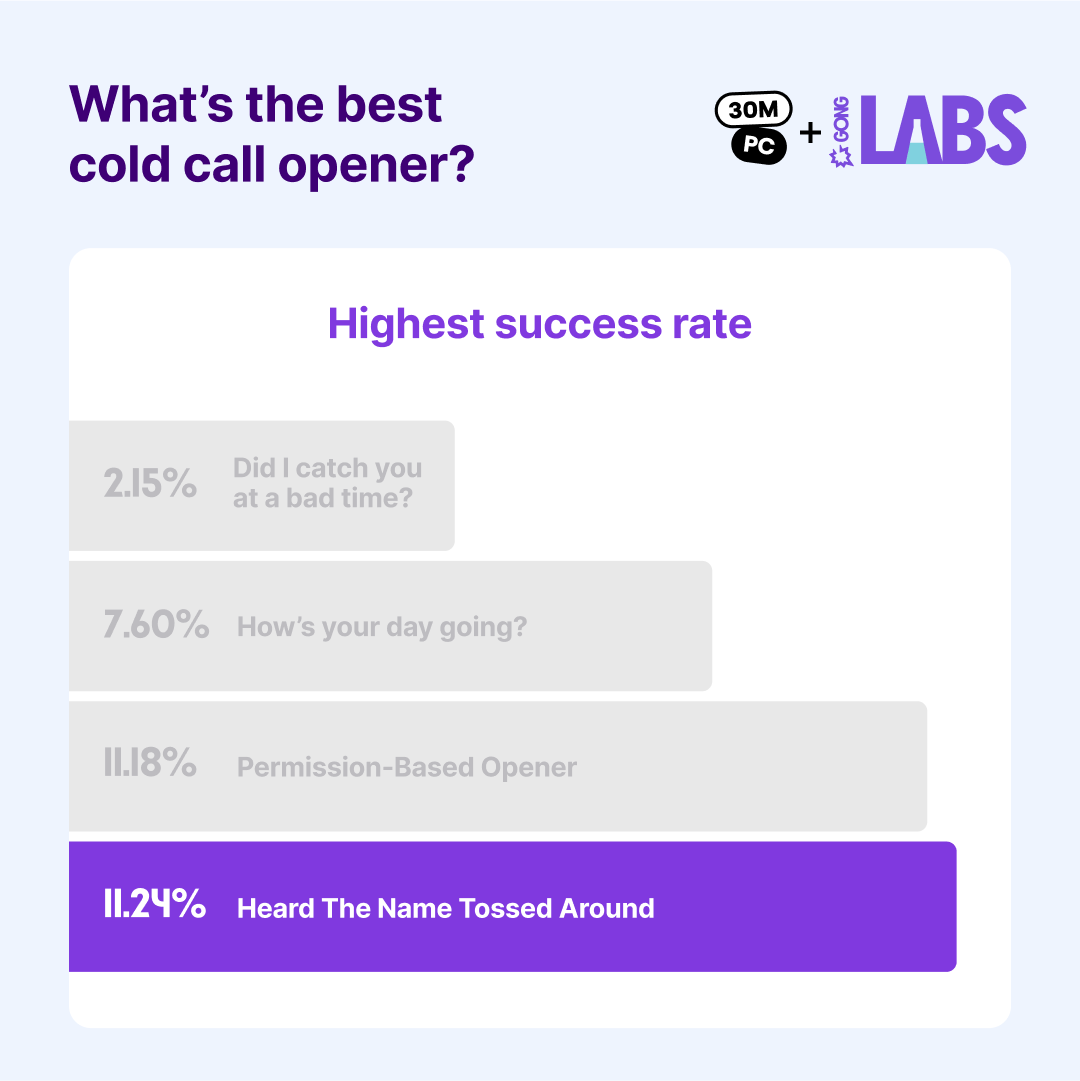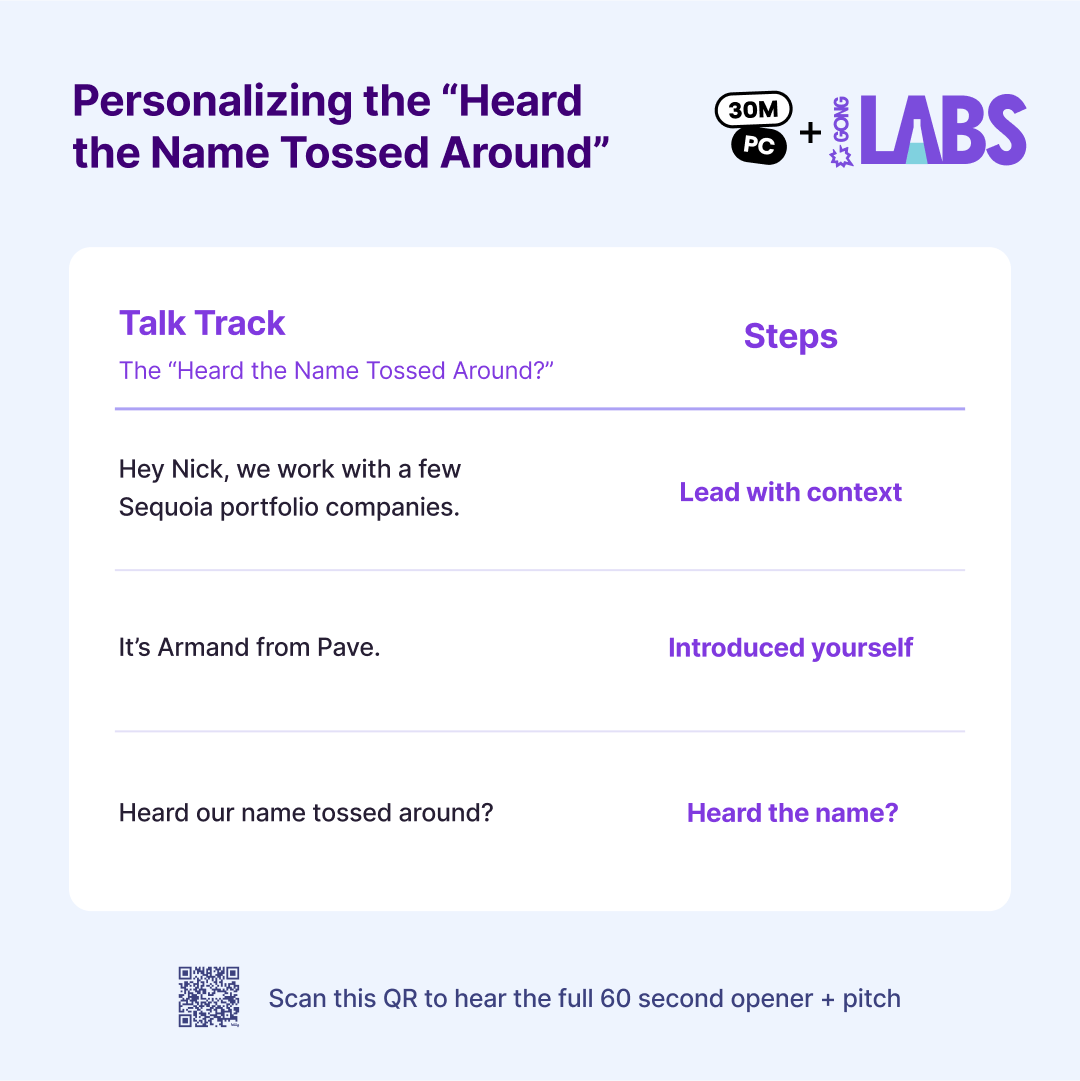The best and worst cold call openers (backed by data from 300M calls)

This article is part of a special Gong Labs x 30 Minutes to President’s Club cold calling series in celebration of our book release: Cold Calling Sucks (And That’s Why It Works). If you like this, reserve your copy of the book here and subscribe to Gong Labs or 30MPC for more data-backed sales tips.
In April 2018, Gong Labs uncovered the best cold call opening lines. Six years and hundreds of millions of cold calls later, we’re bringing you the best ways to kick off your cold calls in 2024 and beyond.
The first few words you say will make or break a cold call.
Should you say, “How’s your day going?”
Or ask, “Did I catch you at a bad time?”
Or maybe ask for “30 seconds to tell you why I called?”
The never-ending debate rages on… until now.
We analyzed 300M+ cold calls to answer the question: What’s the best cold call opener?
There are 4 openers we’ll breakdown:
- How’s your day going?
- Did I catch you at a bad time?
- Could I get 30 seconds to tell you why I called?
- Have you heard our name tossed around?
Let’s break them down.
“Did I catch you at a bad time?”
You’re making a cold call. Of course, it’s a bad time…
This opener’s success rate is the lowest of the openers we validated, at 2.15%, just slightly higher than the average baseline.
I can’t count the number of times I’ve seen a prospect say, “Yes, it’s a bad time…” then never answer your call again as if they were part of the witness protection program.
Moreover, this lowers your status in the eyes of the prospect as if they’d be so gracious as to spare you a moment of their attention.
It was clearly a good enough time for them to answer the phone, so don’t backtrack and ask if you bothered them as if you were a pest.
“How’s your day going?”
This one has an improved 7.6% success rate, but it’s still not as good as the next two.
You and I both know you don’t really care about the person’s day on the other end of the line.
You know it, I know it, and they know it. Inevitably, you’ll hear in return a deep sigh (because you’re wasting their time), followed by, “I’m fine; what’s this regarding?”
That can be translated as: “I know this is a sales call, telemarketer.”
Nearly every salesperson uses this opener, and your prospect won’t be able to distinguish your sincerity from every other call. It only lumps you in with the rest of the telemarketers.
The permission-based opener
The permission-based opener has a strong 11.18% success rate because it owns that you’re making a cold call and disarms the prospect with brutal honesty.
We like to personalize our permission-based opener (what we call a “Tailored Permission Opener”) using these three steps:
- Lead with context
- Own the cold call
- Then get permission to pitch.
Here’s what that looks like (with an audio talk track of the full 60-second opener and pitch to master the tone):
The “Heard the name tossed around?” opener
And the winner of them all is The Heard The Name Tossed Around Opener, with a whopping 11.24% success rate.
The goal of the “heard the name tossed around” opener is to get them to forget that it’s a cold call by leading with context that shows you’ve worked with their peers.
The step-by-step breakdown is as follows:
- Lead With Context: Show you work with similar companies (by industry, investor)
- Introduce Yourself: Introduce yourself AFTER you establish you’re not a random.
- Heard The Name? Ask if they’ve heard your name tossed around.
Here’s an example from when I sold compensation software at a company called Pave (with an audio talk track of the full 60-second opener and pitch to master the tone):
The most important part is to lead with context. When you lead with context instead of a normal greeting, a pitch, or anything else – you establish familiarity.
It’s like you’re calling a referral – “I work with other folks like you, they’ve probably mentioned me, right?”
From here, one of two things will happen:
If they say yes, you don’t need to pitch. Just ask: “Oh good, we’d normally be working with someone like you by now. What’d you hear?”
If they say no (which is more common), explain how you work with their peers. I’ll usually say: “Ha! Guess I’m not as popular as I thought. Well, the reason for my call is I work with a few other Sequoia portfolio companies, and typically… [explain the problem you solve]”
Get the tactics behind the data
In Cold Calling Sucks (And That’s Why It Works), we broke down every part of a cold call and partnered with Gong to back the advice with data from 300M+ cold calls.
In the most actionable sales book ever, you’ll find:
- Every step of a cold call broken down from opener to objection
- Talk tracks with voiceovers (in QR codes) to master tone
- Examples no matter what you sell from over 200+ President’s Club sellers
- Backed by data from 300M+ cold calls on Gong
If you liked this, you can preview chapter 1 of the book for free here.

